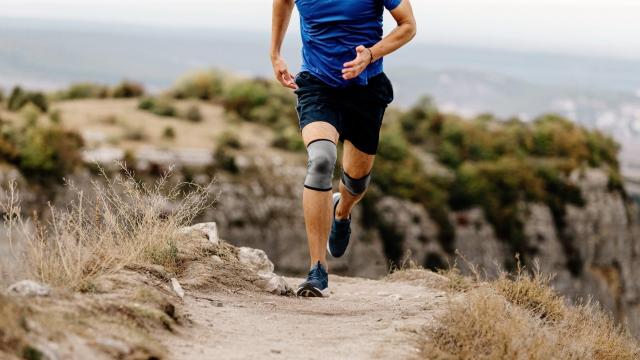It seems whenever I mention I’m a runner, there’s a good chance someone is about to warn me that I’m going to ruin my knees. And although the belief that running will destroy your knees is a widespread one, there isn’t much evidence to support the claim.
“Generally, what we tell people is ‘use it or lose it,’” said Cordelia Carter, an orthopaedic sports surgeon at NYU Langone. “You’re not going to run your knees out.”
On the contrary, there’s actually a lot of evidence running has a protective effect on the knees — one more benefit alongside all of the others that come with regular exercise.
That said, there is no magic bullet that will protect you from exercised-induced injuries. Although running is beneficial for many people, it’s important to be mindful of injury prevention, as well as to know your body’s strengths and limitations. “Some people are just naturally built to run injury free more effortlessly than others,” Carter said.
So what do we know about the effect of running on the knees?
Runners have lower rates of arthritis in the knees
The first clue that running may not be as harmful as we once thought is the fact that if you compare runners with non-runners, the former are statistically less like to develop arthritis in the knees. In a study that followed runners versus non-runners for 20 years, X-rays showed signs of arthritis in the knees of 20% of runners and 32% of non-runners. The counter-argument is that runners who develop knee injuries will stop running and therefore be counted as non-runners, but a different study that followed 2,000 people for several years also found that both current runners and former runners were less likely to develop arthritic knees.
If people stopped running due to knee pain, we’d be seeing a higher rate of arthritis in the knees of former runners, rather than lower incidences.
Running may strengthen the cartilage in our knees
Recent evidence suggests the protective effects of running may be due to it strengthening the cartilage in our knees. Previously, the belief was that cartilage had only a limited ability to repair itself, with the repeated impact of running wearing it down, thus leading to arthritis. However, in animal studies, animals that run have thicker cartilage than the non-running animals.
In a study published last year, researchers looked at whether this holds true in humans as well. To do this, they used data tracking the force generated on the knee during running in order to create a simulation showing what the potential impact on cartilage.
The simulation compared two scenarios: what would happen if cartilage had only a limited ability to repair itself, versus what would happen if it had a slightly more robust ability to repair itself. The results suggest that if cartilage only had a limited ability to repair, we’d see arthritis develop in the knees of almost all runners, as well as a significant number of daily walkers, while if it had a more robust ability to repair, that would lead to rates closer to what we observe in real life.
Runners can still develop knee pain if they aren’t training properly
Although there’s a lot of evidence showing running is good for the knees, that doesn’t mean a runner has zero risk of developing knee problems. “Runner’s knee” is a common ailment that often requires physical therapy, as well as an adjustment of your training strategy. “Only running and running every day are not the ways to avoid injury,” Carter said.
Runner’s knee can develop from a number of issues, whether it’s a muscle imbalance, a gait issue, or ramping up mileage too quickly. That’s why it’s important to be cautious when it comes to increasing the intensity of your training. It’s also important to make sure that your shoes are supportive and that you replace them when they wear out.
When runner’s knee is due to a muscle imbalance, the solution is often physical therapy. Usually, the muscles that cause imbalance include the core, as well as hip and pelvis muscles.
“It’s about balancing muscle groups and targeting ones that are underused,” Carter said. “Runners get really good at using some muscle groups, then ignoring others.”
Incorporate cross-training and strengthening exercises
Avoiding the muscle imbalances that lead to knee pain requires taking a holistic approach to your training. This includes incorporating a variety of exercises, such as strength training as well as different forms of cardio, factoring in enough time to rest and recover, as well as ramping up your mileage or intensity slowly.
Carter likes to recommend yoga, which works the core, as well as incorporates rotational movements that running doesn’t provide, which can help stave off injuries. “I use yoga almost as a home physical therapy regimen, because of the strengthening exercises,” Carter said.

Leave a Reply
You must be logged in to post a comment.